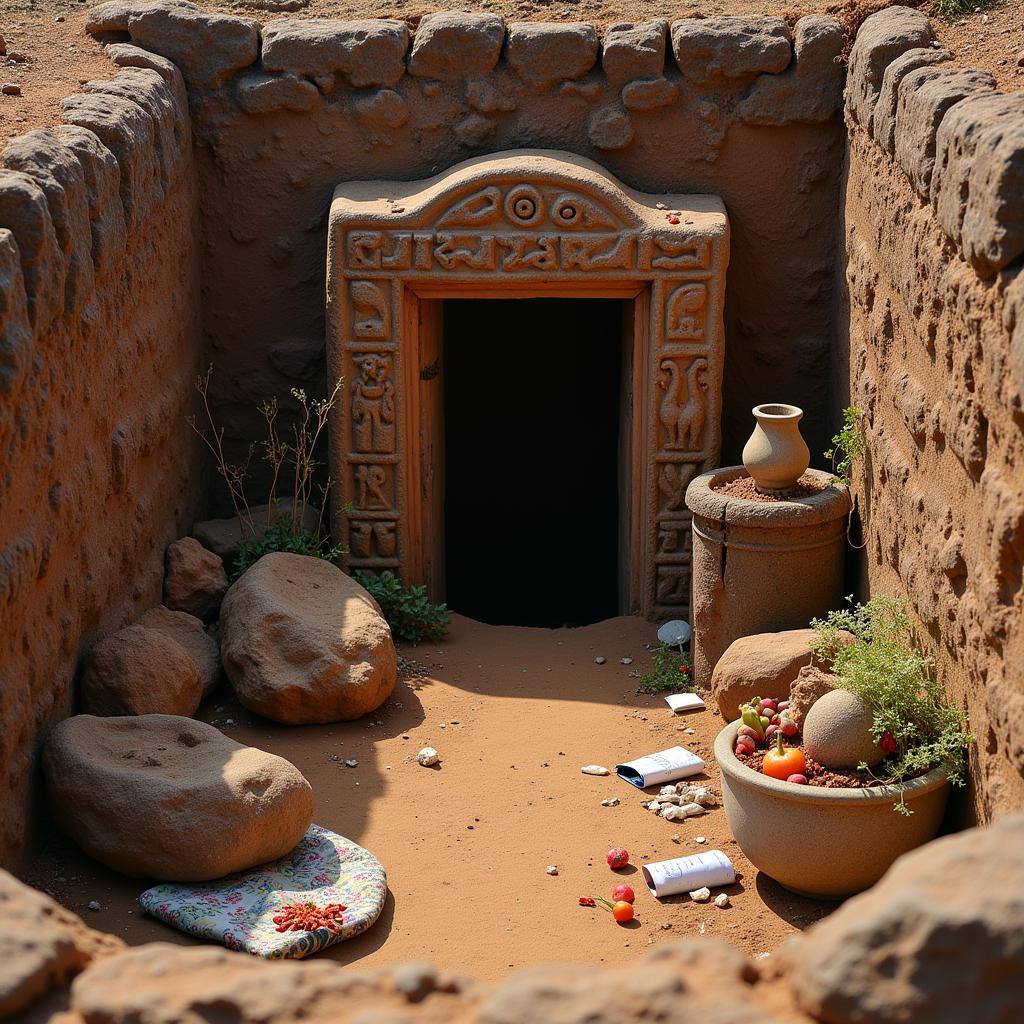Unveiling the Majesty: African Elephant Tusk Length
African Elephant Tusk Length is a fascinating subject, reflecting the age, genetics, and environment of these magnificent creatures. Tusks, essentially elongated incisor teeth, serve multiple purposes, from digging for water and minerals to stripping bark from trees and defending against predators. But how long can these ivory appendages actually grow? Let’s delve into the world of elephant tusks and explore the factors influencing their remarkable size. You’ll discover just how much these impressive tusks contribute to the elephant’s survival and the challenges they face due to human impact.
The Significance of African Elephant Tusk Length
Tusks are more than just impressive ornaments; they are crucial tools for African elephants. Their length often signifies an elephant’s age and dominance within the herd. Larger tusks can give an elephant an advantage in competing for resources and mates. Elephants with longer tusks often have better access to food and water, which is especially important during dry seasons. They can also use their tusks for self-defense against predators like lions. Sadly, this magnificent feature has also made them a target for poachers, a serious threat to their survival.
You can learn about the gestation period of these incredible animals from the African elephant gestation article.
The evolutionary pressure of ivory poaching has led to a concerning trend: shorter tusks, or even the absence of tusks altogether, are becoming more common in some elephant populations. This demonstrates the devastating impact of human activities on the natural world.
Factors Influencing Tusk Growth in African Elephants
Several factors influence African elephant tusk length, including genetics, diet, and environmental conditions. Just as some humans are genetically predisposed to be taller, some elephants inherit genes that promote larger tusk growth. A nutrient-rich diet also plays a crucial role. Elephants in areas with abundant food and mineral resources tend to develop longer and stronger tusks. Environmental factors, such as drought, can also impact tusk growth. During periods of scarcity, tusk growth may slow down as the elephant prioritizes essential bodily functions.
How to Estimate African Elephant Tusk Length?
While measuring an elephant’s tusk directly can be dangerous and challenging, experienced researchers use various techniques to estimate their length. One method involves measuring the circumference of the tusk at its base and using established formulas to calculate the approximate length. Another method uses photographs and image analysis software to determine the tusk length based on the elephant’s body size and known proportions.
How long are the longest African elephant tusks ever recorded?
The longest recorded African elephant tusks measured over 10 feet long and weighed over 200 pounds each. These were truly exceptional specimens, highlighting the potential for incredible tusk growth under ideal conditions.
Have you ever wondered about the differences between an African bull elephant and a T-Rex? Check out the African bull elephant vs t rex article for a fascinating comparison.
The Impact of Poaching on African Elephant Tusk Length
Poaching for ivory has had a devastating impact on African elephant populations and their tusk length. The selective killing of elephants with large tusks has led to a genetic shift towards smaller tusks or even tusklessness in some populations. This is a tragic consequence of human greed and highlights the urgent need for conservation efforts.
For more information on the physical characteristics of African elephants, take a look at the African elephant outline.
The Future of African Elephant Tusks
The future of African elephant tusks depends on our collective efforts to combat poaching and protect these magnificent animals. Strengthening anti-poaching patrols, raising awareness about the ivory trade, and supporting sustainable tourism initiatives are essential steps in ensuring the survival of elephants with their majestic tusks for generations to come. It’s vital to remember that these tusks are not mere trophies but essential tools for survival, playing a critical role in the elephant’s life and the ecosystem they inhabit.
You can also learn more about the dynamic between elephants and lions by reading about an African elephant attack lion.
Conclusion
African elephant tusk length is a captivating subject that reveals much about these incredible animals. From their crucial role in survival to the devastating impact of poaching, understanding the significance of tusks is essential for their conservation. By working together, we can protect these majestic creatures and ensure that their magnificent tusks continue to grace the African savanna.
FAQ
- What is the average African elephant tusk length? The average length varies but can range from 4 to 6 feet for males and slightly shorter for females.
- Do female African elephants have tusks? Yes, both male and female African elephants have tusks.
- What are elephant tusks made of? Elephant tusks are made of ivory, which is dentine.
- How fast do elephant tusks grow? Tusks grow throughout an elephant’s life, at a rate of several inches per year.
- Why are elephant tusks so valuable? Unfortunately, the illegal ivory trade drives the demand and high value placed on elephant tusks.
- What can be done to protect elephants from poaching? Supporting conservation organizations, raising awareness, and advocating for stricter regulations against the ivory trade are crucial.
- Are there any alternatives to ivory? Yes, several sustainable materials can replace ivory, including tagua nut and recycled plastics.
Common Scenarios and Questions
-
Scenario: You’re on a safari and spot an elephant with incredibly long tusks. You wonder how long they are and what factors contribute to their size.
-
Question: How can I estimate the length of an elephant’s tusks from a safe distance?
-
Scenario: You’re researching the impact of poaching on elephant populations and want to understand the connection between tusk length and poaching pressure.
-
Question: How has poaching influenced the evolution of tusk size in African elephants?
Further Exploration
For more information on the majestic African bush elephant’s long tusks, explore our article: African bush elephant male long tusks.
Call to Action
For any inquiries or support related to African wildlife conservation, reach out to us:
Phone: +255768904061
Email: kaka.mag@gmail.com
Address: Mbarali DC Mawindi, Kangaga, Tanzania.
Our customer service team is available 24/7.




